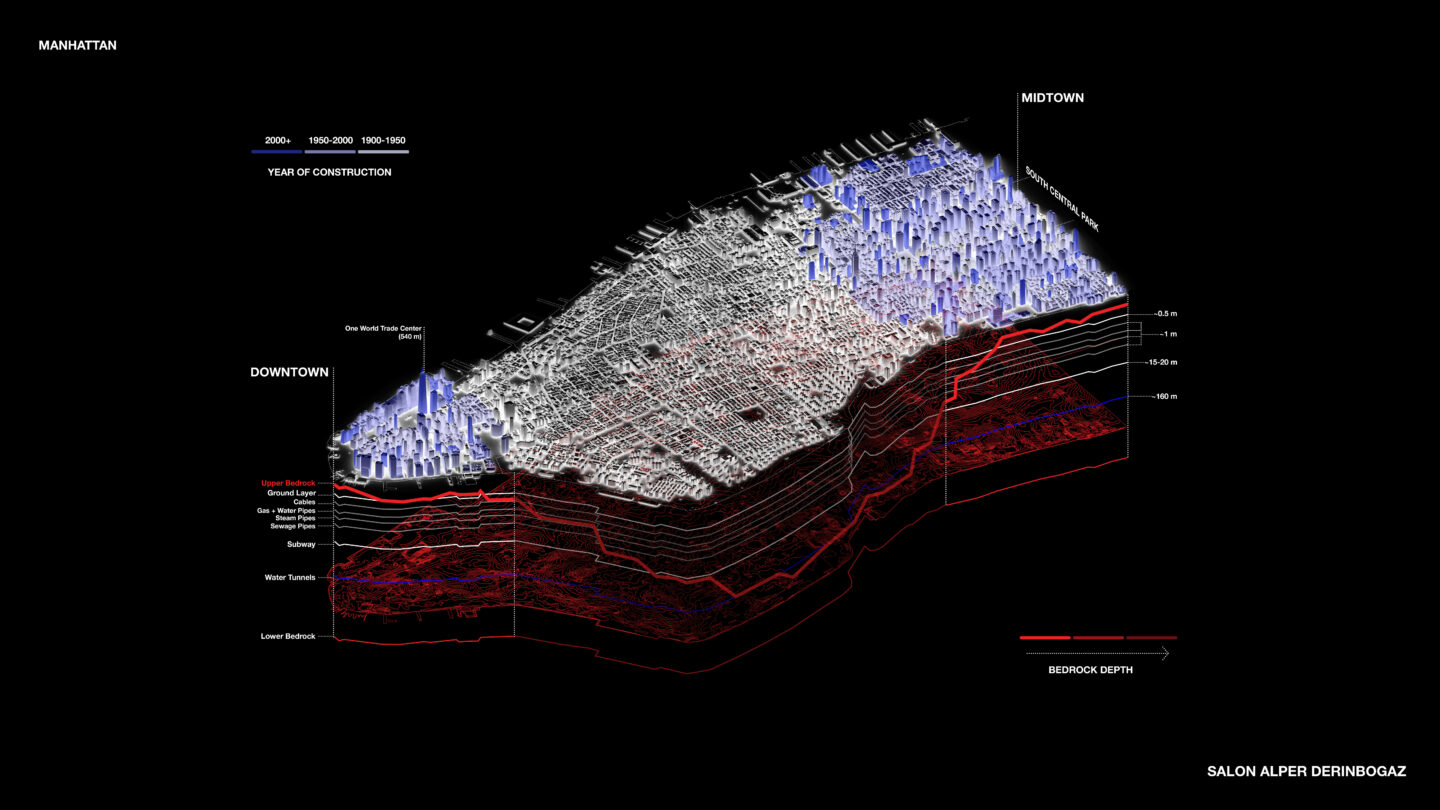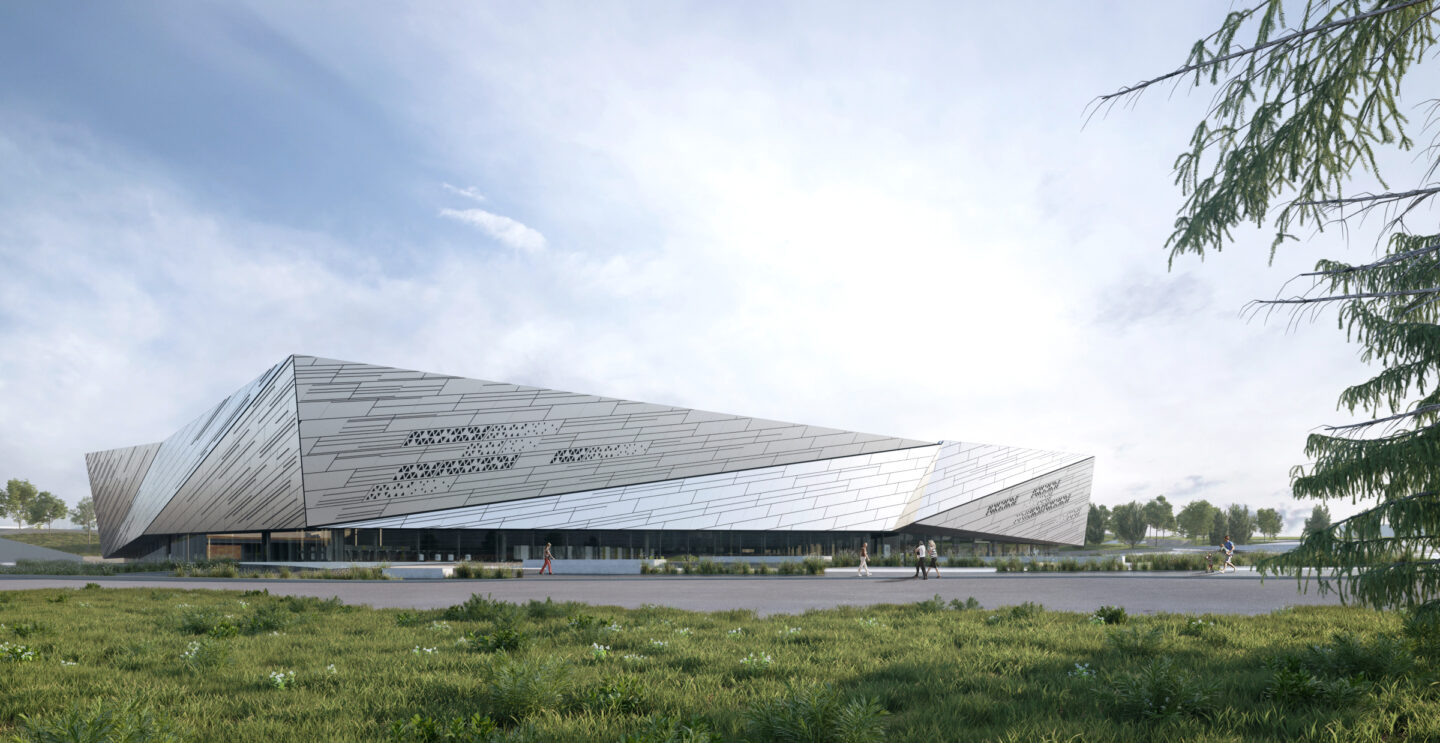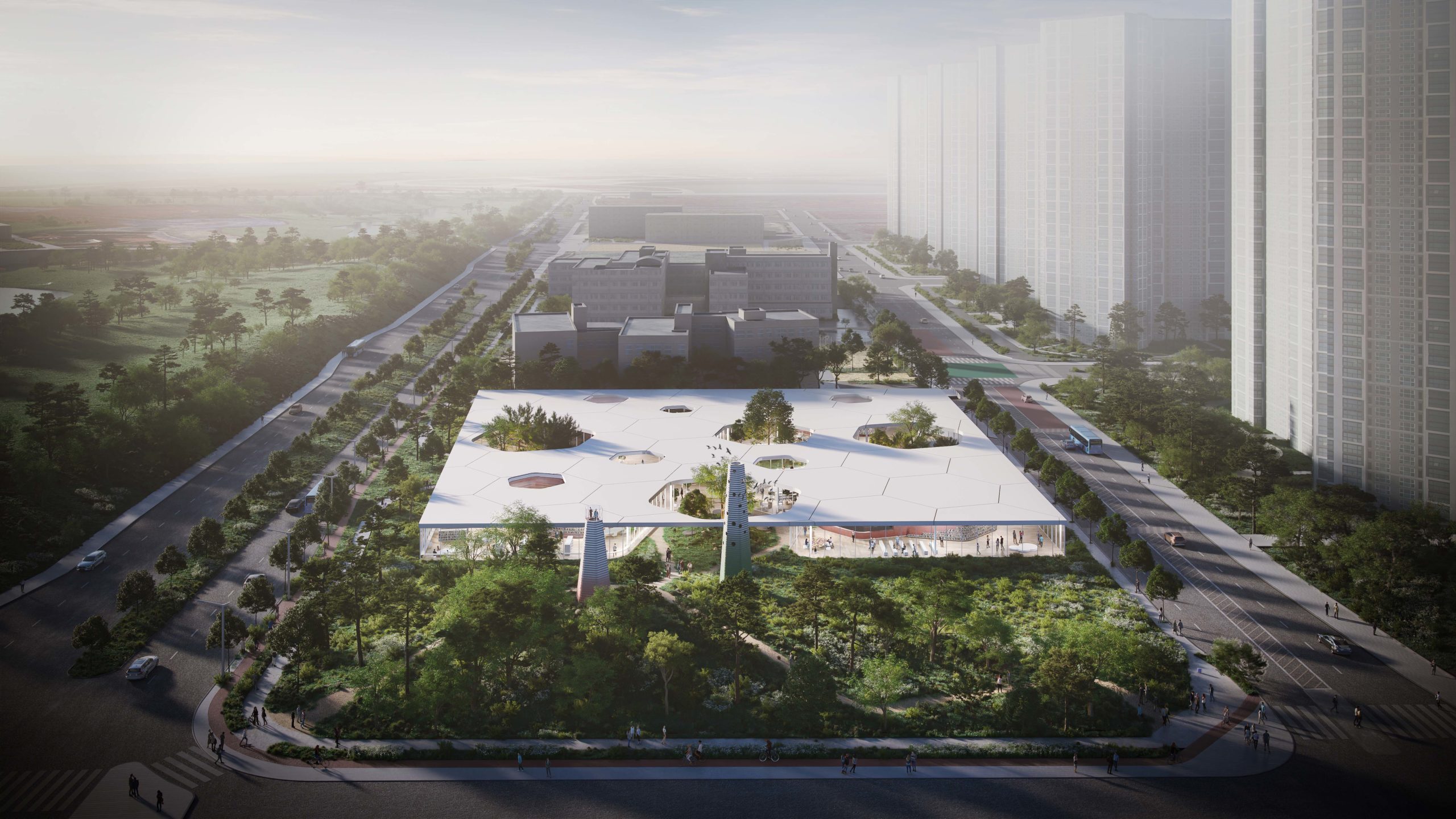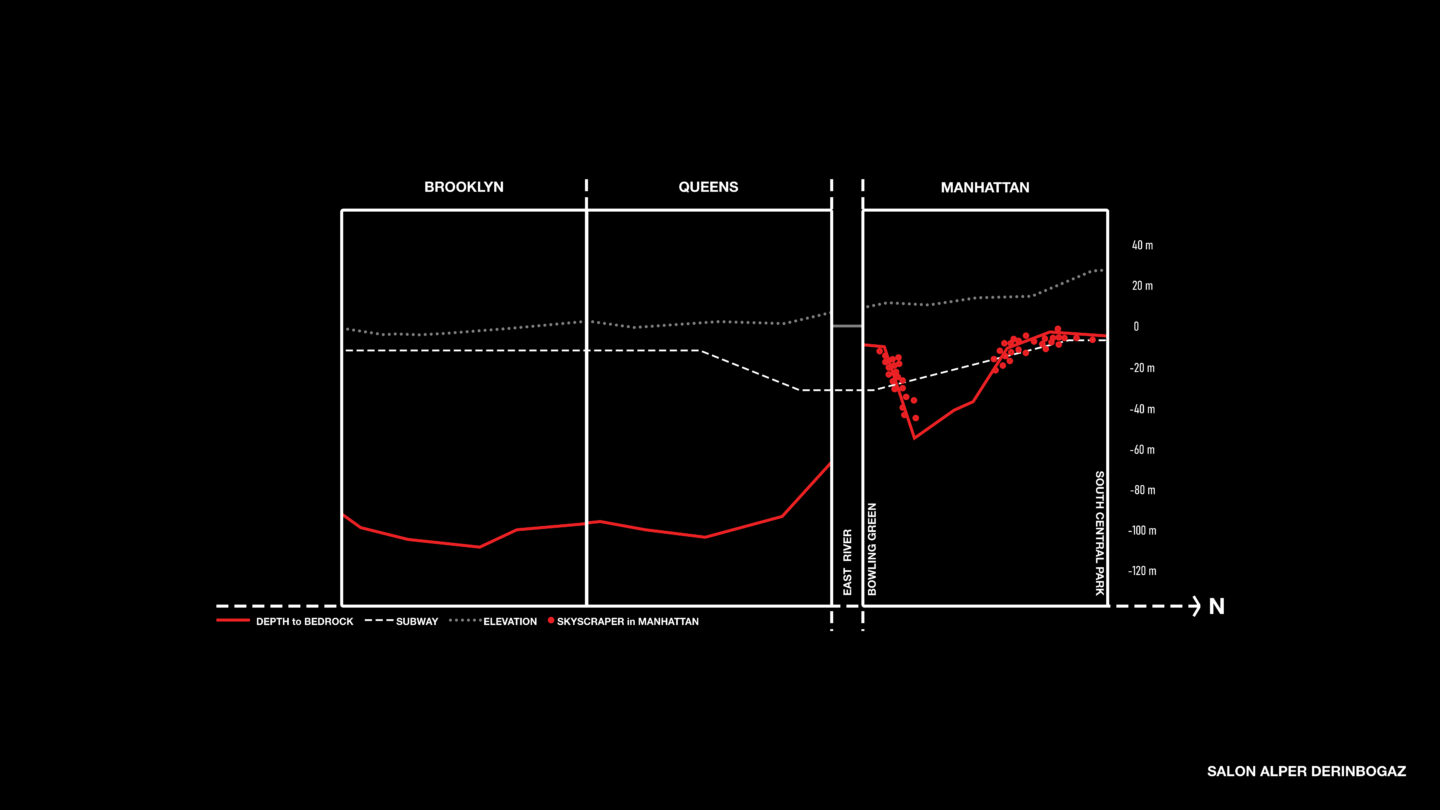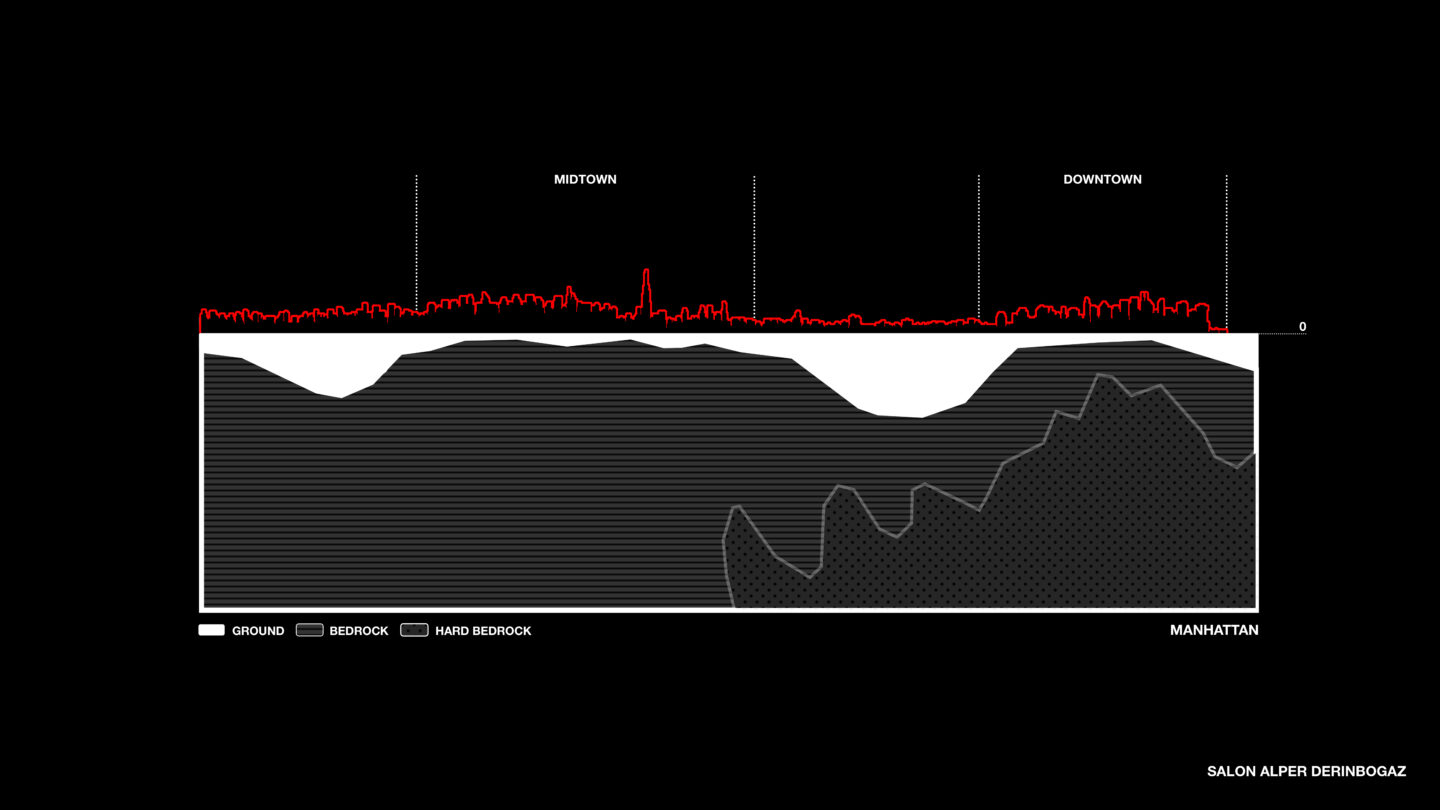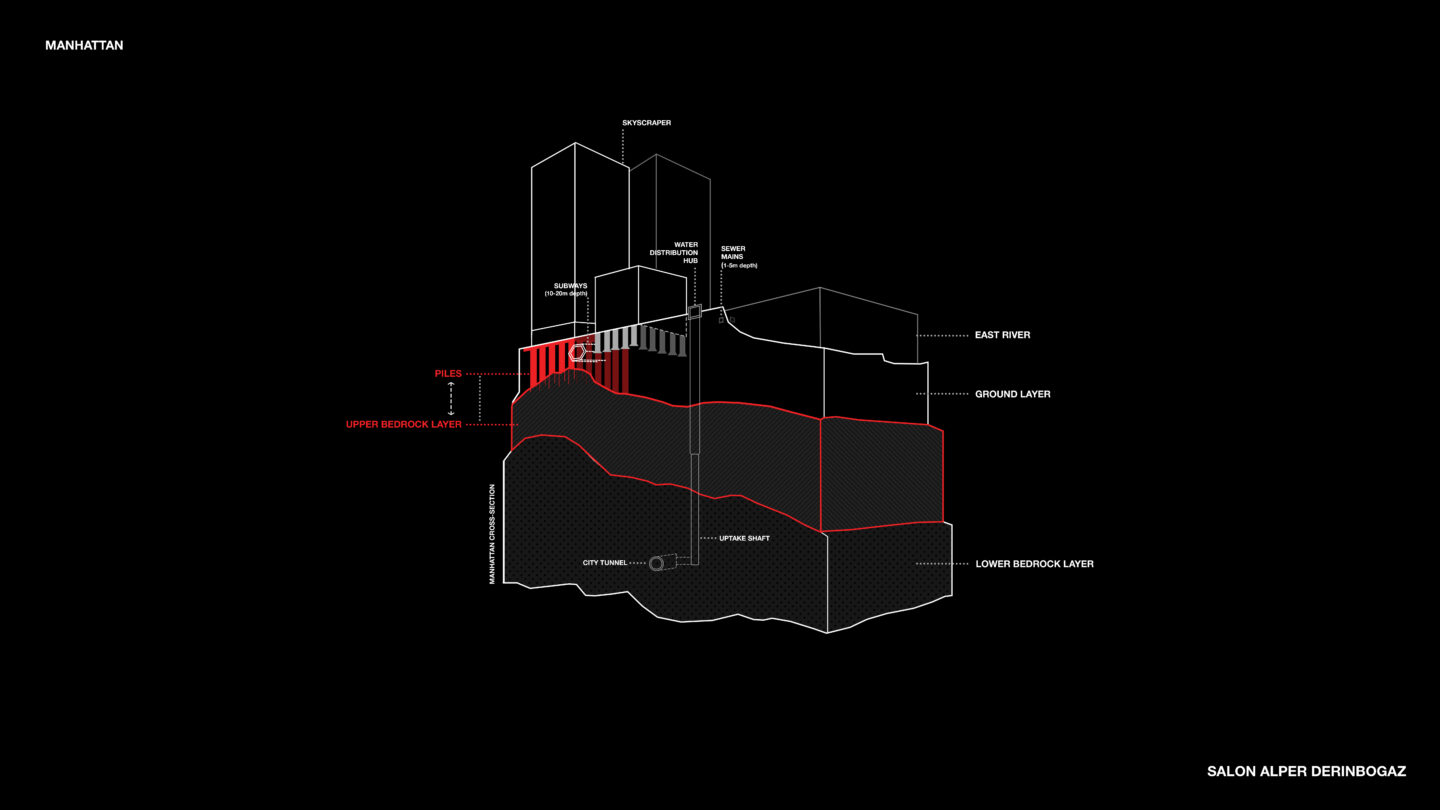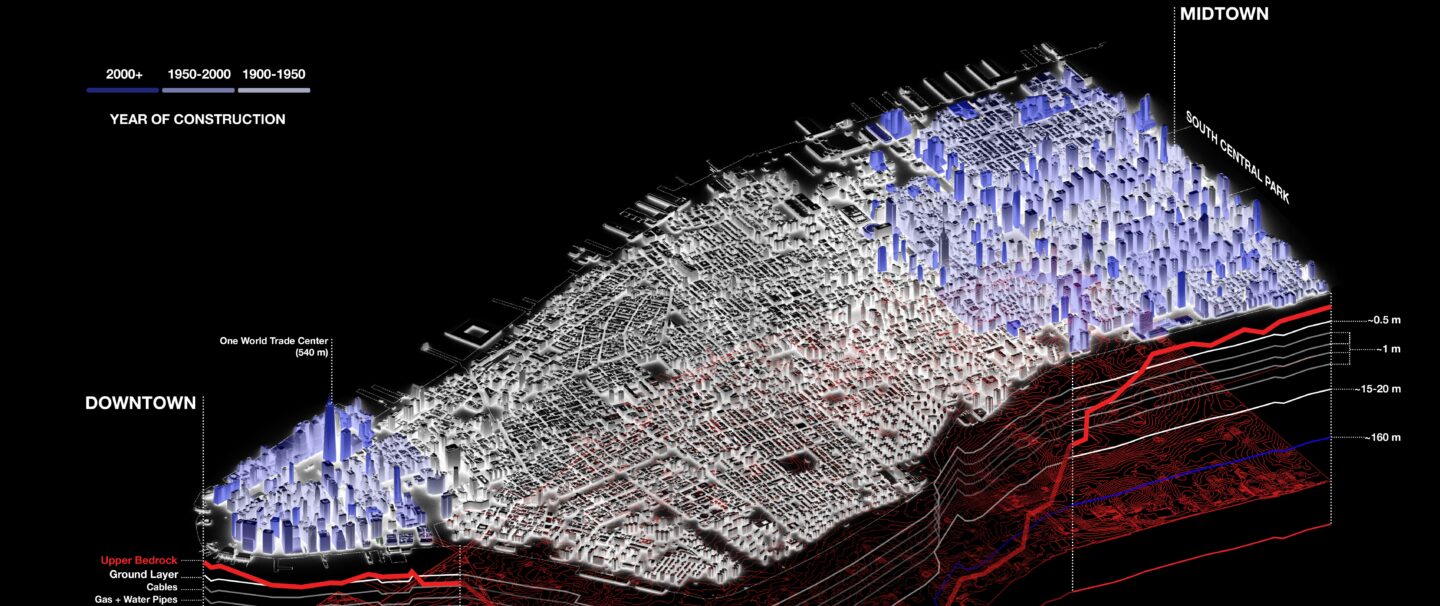
Mete Bezek
This research seeks answers about how the geology of the island of Manhattan shapes the New York skyline. The city’s landscape is the product of millions of years of geological activity, from the formation of bedrock to the deposition of sedimentary rocks that make up the city’s iconic skyscrapers.
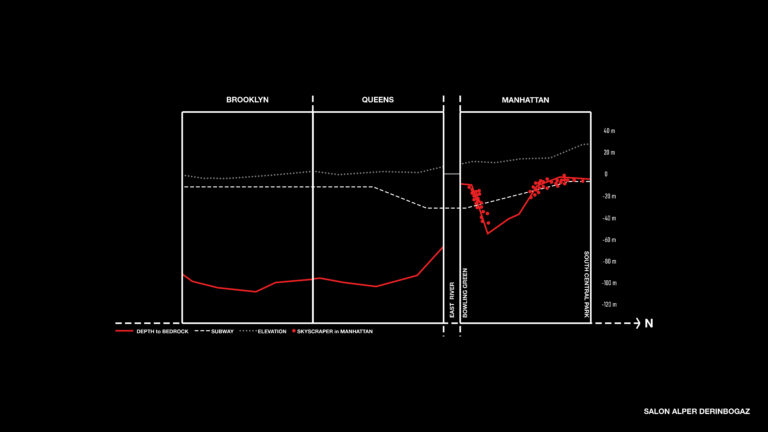
The distribution of bedrock has played a significant role in the development of skyscrapers in Manhattan Island. Manhattan’s bedrock is composed primarily of two types of rock: Manhattan Schist and Fordham Gneiss.
Manhattan Schist is a type of metamorphic rock that is strong, and durable, making it an ideal building material for many of New York City’s famous skyscrapers. The rock is prevalent in the midtown area of Manhattan, which is where many of the city’s most iconic skyscrapers are located, such as the Empire State Building, Rockefeller Center, and One World Trade Center. The distribution of Manhattan Schist has influenced the development of the city’s skyline because it provides a stable foundation for tall buildings. The rock is strong enough to support the weight of the skyscrapers, and it also provides a stable base for the foundation of the buildings.
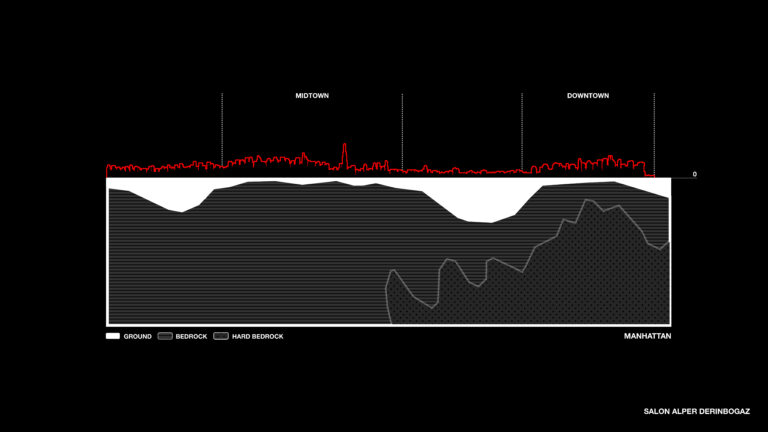
In contrast, areas of Manhattan Island where the bedrock is less stable, such as in parts of the Financial District, have historically had shorter buildings due to the limitations of the foundation. The bedrock in these areas is composed of sedimentary rock, which is less stable than Manhattan Schist. Because of the bedrock’s proximity to the surface, it is easier and less expensive to construct tall buildings in Manhattan than in other areas. The bedrock allows for the use of deep foundation systems, such as pilings, which can support heavy loads and provide stability to tall structures. This has allowed developers to build taller buildings.
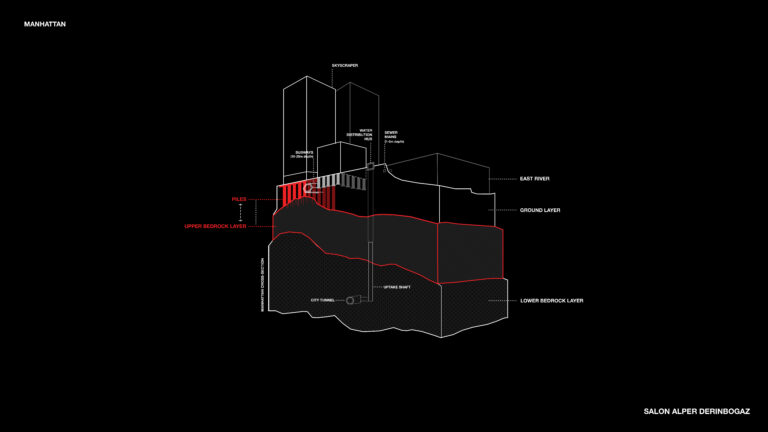
Moreover, the bedrock has also limited the development of skyscrapers in certain areas.
Some parts of Manhattan have shallow bedrock, which can make it more difficult and costly to build tall structures. In addition, building on bedrock can be challenging in areas where the bedrock is fractured or faulted, which can make it difficult to create a stable foundation.
